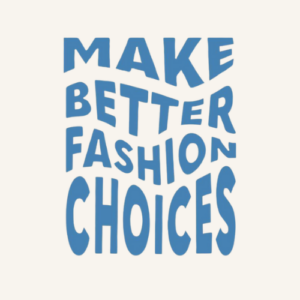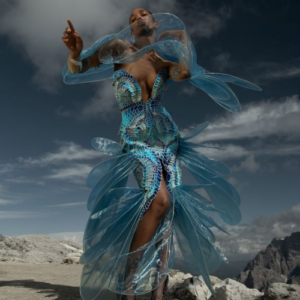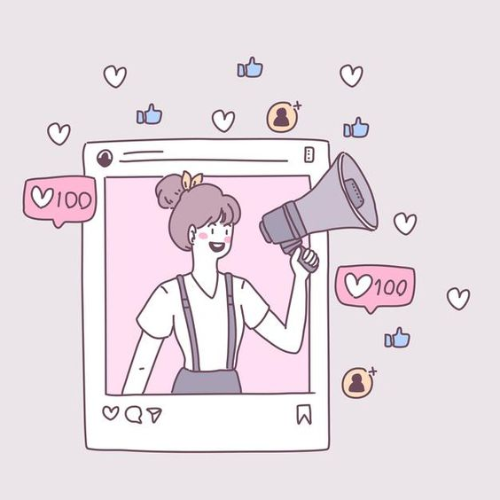The detrimental impact of the fashion industry is known. We have seen pictures of mountains of clothes in landfill, and we are aware of the unsustainable and unethical production of fast fashion. Still, fast fashion consumption is increasing, and it is expected to reach a market value of 211 billion dollars in 2030.
So the question then is: why, knowing the impact of the industry, is the consumption still increasing? What is the reason that we cannot seem to let fast fashion go?
The Sustainable Fashion Forum ‘23 conference in Portland, Oregon tackled these questions, with a panel on “the psychology of fast fashion”. Willow Hill, Co-founder & CCO of Scoutlab, Rayouf Alhumedhi, and Dr. Dion Terrelonge from The Style and Wellbeing Consultancy shared their insights into the psychology behind our attraction to fast fashion.
Based on this panel talk, I would like to discuss our attraction to fast fashion, and the psychology behind it.
The appeal of fast fashion
During my research for this post, I found many reasons why fast fashion is still such an attractive option for us. Some are more obvious than others, but all play an important role in the consumption.
Affordability and accessibility of fast fashion
The undeniable appeal of fast fashion is primarily due to its cost-effectiveness. By mass-producing clothing in countries with little to no regulatory constraints, fast fashion manufacturers can keep production costs extremely low, allowing them to offer their products at a fraction of the price of sustainable fashion items. Some brands are able to sell items for as little as €5 and still make substantial profits. Despite the fact that fast fashion products tend to be of lower quality, consumers find fast fashion to be a much more attractive option, thanks to its affordability.
In addition to affordability, the accessibility of fast fashion is another crucial factor contributing to its widespread appeal. With just a few clicks, we can easily order fast fashion items online, with one-day shipping and convenient return policies, which also feature free shipping. Moreover, fast fashion is accessible in terms of size, style, patterns, and colors, ensuring that everyone can easily find whatever they need to match their unique personal preferences.
Fast fashion and social media
Fast fashion’s appeal goes beyond just affordability and accessibility. Social media has emerged as a significant influencer in the consumption of fast fashion, shaping our shopping behavior and promoting fast fashion as a lifestyle.
Social media has become a platform for self-expression, and fashion is a major component of that expression. People can easily share their outfits and style choices with a wide audience, seeking validation and inspiration from others. Influencers and celebrities have a significant impact on fashion trends and promote fast fashion as a lifestyle. They often collaborate with fast fashion brands, showcasing their products to millions of followers, which creates a sense of desire and exclusivity. Consumers feel the need to replicate the looks of their favorite influencers and celebrities by purchasing the same clothes.
It is impossible to get away from all the advertisements of fashion brands. Next to using influencers and celebrities to showcase their products, fashion brands also use different marketing strategies that appeal to the customer’s needs.
Furthermore, social media has made it easier for consumers to access and purchase fast fashion items. Instagram and TikTok, for example, have introduced features that allow users to buy items by simply clicking on a picture. With just a few clicks, consumers can now directly shop from social media platforms or through the brand’s website, making the purchasing process quicker and more convenient. The affordability of fast fashion allows people to experiment with different styles and trends without breaking the bank, making it easier for them to express themselves through fashion. Social media has thus created a cycle of fast fashion consumption that feeds into our desire for self-expression and validation, making it difficult for consumers to break free from this pattern.
Fast fashion and the brain
The psychology of fast fashion is also to how our brains work. Fast fashion triggers our brain’s reward system by providing us with instant gratification, making us feel good about our purchases. When we see an item we like at an affordable price, our brains release dopamine, a neurotransmitter associated with pleasure and reward. This dopamine rush can lead to impulsive buying behavior, which can become addictive.
Fast fashion brands use various tactics to exploit this dopamine rush and keep customers coming back. They create a sense of urgency by offering limited-time deals, and by constantly releasing new collections, making it feel like we need to keep up with the latest trends. Fast fashion brands also use bright colors, catchy slogans, and attractive models to appeal to our emotions and create a sense of desirability and exclusivity.
However, this addictive behavior and the constant need for novelty have led to a phenomenon known as “fast fashion fatigue.” Consumers are becoming more aware of the environmental and social impacts of fast fashion, leading to a growing demand for sustainable and ethical fashion practices. This shift in consumer behavior suggests that our brains are capable of change and adaptation, and we can break free from the cycle of fast fashion addiction.
The psychological distance
During the panel, the psychological distance was brought up. This is a very interesting concept, especially important for climate change communication.
This concept explains that even though we are highly aware of the impact of the fashion industry on people and the planet, we ourselves as a Western society do not feel the consequences.
We are thousands of kilometers away from where the production of clothes takes place, so we do not feel the environmental degradation. We do not see our water being polluted by all the chemicals or our family working days and night in the factory. Therefore, we do not feel compelled to change, because “we don’t see the impact anyway”.
Intention-behavior gap
Essentially, there is an intention-behavior gap. The intention-behavior gap is a phenomenon in psychology that refers to the disconnect between our intentions and our actions. It is the difference between what we intend to do and what we actually end up doing. In the context of fast fashion, many individuals may intend to stop buying fast fashion due to ethical or environmental concerns, but they continue to purchase it due to a variety of reasons such as the affordability, accessibility, the need for self-expression, the influence of social media, and the dopamine rush.
What can we do?
We need to close the intention-behavior gap. We know the reasons why we keep buying fast fashion. So what can we do to change?
First, it is important that we practice conscious consumerism. Conscious consumerism is a movement towards more mindful and ethical consumption practices. It is a way of making intentional choices about the products we buy and the companies we support, with the goal of minimizing our impact on the environment and society. It is important to consider whether you need the product and whether you’re aware of the social and environmental impact. By practicing this, we can reduce our consumption and avoid unnecessary waste.
Second, invest in high-quality timeless pieces. High-quality clothing is typically made with better materials and craftsmanship than lower-quality alternatives. This means that it is likely to last longer and hold up better over time, reducing the need for frequent replacements and ultimately saving money in the long run. In contrast, fast fashion items are often made with cheap materials and low-quality construction, resulting in garments that quickly fall apart or lose their shape after just a few wears. I know fast fashion is tempting due to the low prices, but wouldn’t you enjoy wearing items that are comfortable and last for a long time?
Last (for this list), do your own research. Before buying an item, research the brand first. This is so important because I have made missteps once or twice (or more) by simply assuming a brand has similar values as I do and then finding out later that this is absolutely not the case. By doing your own research and looking into brands’ sustainable and ethical practices, you can find out whether they uphold a certain standard. Eventually, you will get very good at recognizing the fakes from truly sustainable, slow, ethical, circular brands. A tip, look at certifications, their transparency, and if possible whether they are local.
Sources
Find the people mentioned here:
- Willow Hill – @bywillowhill
- Rayouf Alhumedhi – @rayoufalhumedhi
- Dr. Dion Terrelonge – @thefashionpsychologist_
- Moderator of the panel: Brittany Sierra – @brittanysiierra
- The Sustainable Fashion Forum – @thesustainablefashionforum
In the list below, you can find the sources that I used for this post:
- https://www.thesustainablefashionforum.com/pages/the-psychology-of-fast-fashion-exploring-the-complex-emotions-fast-fashion-evokes-in-consumers
- https://thebrokegeneration.com/blog/2021/06/07/psychology-fast-fashion/?v=796834e7a283
- https://www.earthday.org/driven-to-shop-the-psychology-of-fast-fashion/
- https://www.theatlantic.com/entertainment/archive/2015/03/the-neurological-pleasures-of-modern-shopping/388577/
- https://www.nrc.nl/nieuws/2023/04/26/nee-voor-de-meeste-mensen-voelt-klimaatverandering-helemaal-niet-ver-weg-a4163174
- https://agood.com/blogs/stories/conscious-consumerism
- https://novelhand.com/how-social-media-fuels-fast-fashion/
If you are still interested in watching the Sustainable Fashion Forum ’23 Conference, you can still get digital tickets to watch the discussions. Here is the link: https://www.thesustainablefashionforum.com/conference-2023
As always, the pictures contain a link

Documentary: Brandy Hellville & the Cult of Fast Fashion
Remember Brandy Melville, the fashion brand with the one-size clothing and many, many crop tops? It was a staple of the Californian dream aesthetic during

Introducing Remake: Accountability in Fashion
In a world where fast fashion is dominating, and overconsumption is at an all-time high, the environmental and especially social costs are often overlooked. The

Introducing: SHADE – Sustainable Fashion Alternatives
Finding truly sustainable fashion brands can be a challenge. While many brands emphasize sustainability to meet consumer demands, not all of them follow through in

France’s Anti-Fast Fashion Bill
On March 14, 2024, France’s lawmakers made a big move toward holding fast fashion brands accountable for their environmental impact. This decision came as the

5 Sustainable Fashion Brands From France
In the world of fashion, France is a dominant force, with the majority of high fashion houses nestled in its capital, Paris. With sustainability gaining

Biomimicry in Fashion: A Sustainable Solution
In the fashion industry, innovation knows no bounds. From the runways of Paris, the bustling streets of New York, and the snowy Alps, designers constantly







